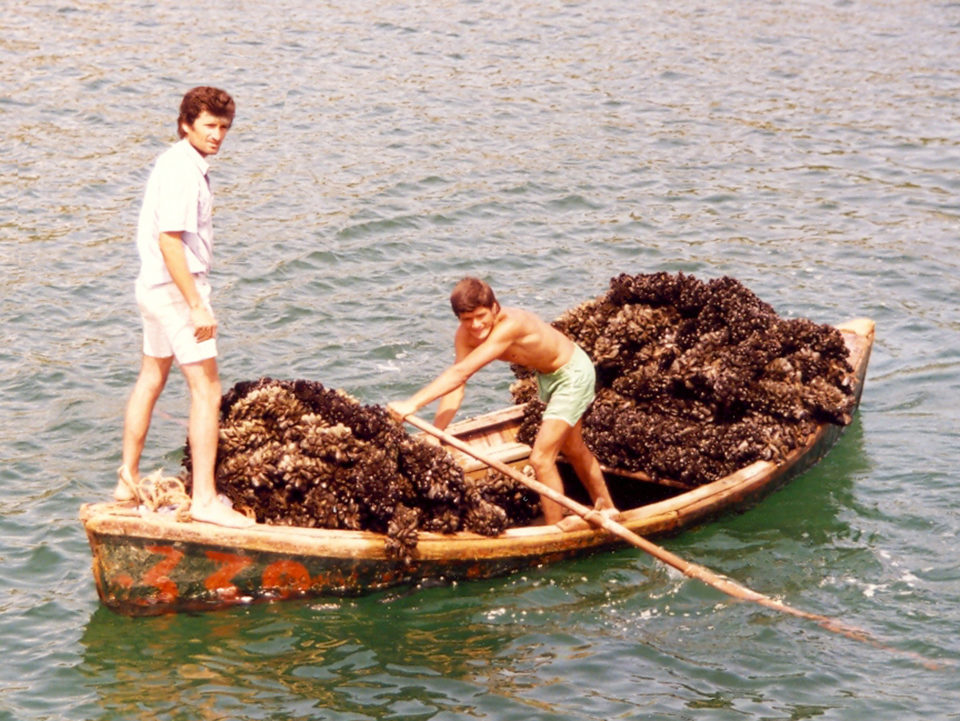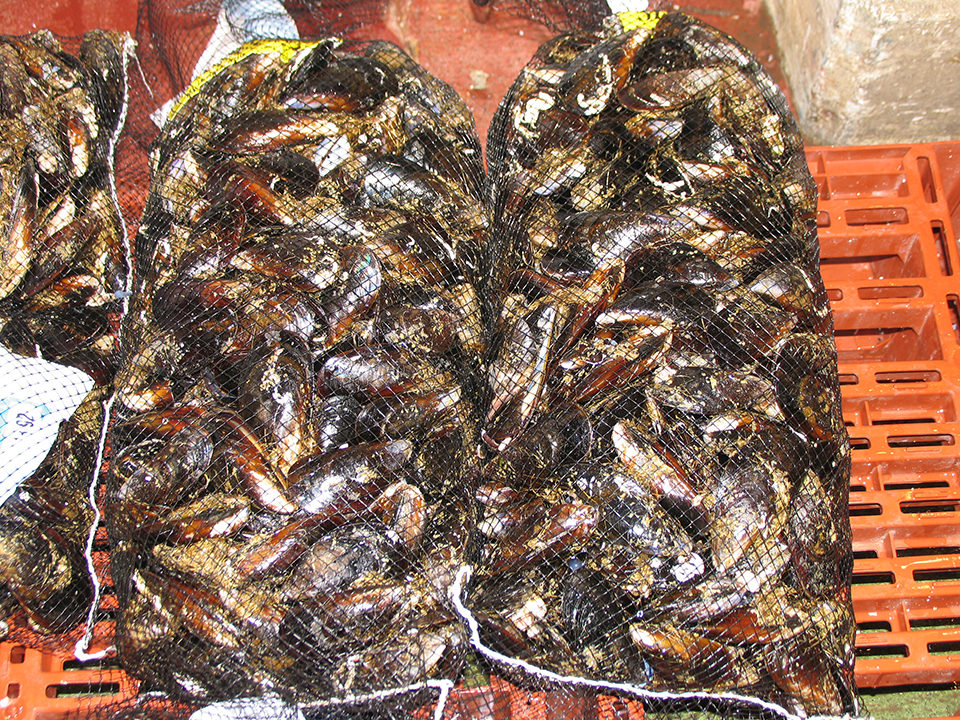Producer aggregation may be a solution

From a marketing point of view, the implications of scale go beyond the volumes of production, costs and efficiency. Scale also describes a firm’s ability to affect its social, environmental and market conditions.
Frequently, the term small-scale in the agrifood business implicates that producers have to accommodate the conditions imposed by the following links in the value chain in terms of prices, quality standards and product differentiation, among others. Producers commonly face limitations related to their limited economic capacities, and even large-volume industries like tilapia aquaculture in developing countries or mollusc farming all around the world, frequently organized in small independent farms, have to deal with those limitations.
The ability of a company to influence the market is directly related to the volumes of supply it has under its own control. By definition, small-scale aquaculture implies that, even in an industry with huge production, private decisions affect small quantities of production.
Small farmers may combine their production, as in cooperatives, resulting in relevant volumes of supply and also scales in terms of transportation, processing and marketing costs. However, other variables escape small farmers’ control and limit the development of markets, such as quality inconsistencies, lack of professional managerial skills and limited promotional efforts.
Varied management duties
Small-scale farmers’ qualifications rarely exceed what is needed to run a farm at the operational level. Farmers know about the best feed for the fish, the optimal breeding periods and how to deal with parasites and pathogens. But they fail when managerial tasks need to be undertaken. Common business practices like budgeting, accounting and financial planning are usually not found within the skills of these farmers.
On the other hand, farm owners, who commonly also work at their farms, may take several different tasks under their responsibility that are not always compatible, resulting in inefficiencies in the use of managers’ available time. They have to control the production, negotiate with suppliers and customers, make decisions on investments, and perform additional tasks that impede increased productivity derived from experience and adequate learning.
In the marketing field, overcharged managers may not have the time and skills to develop new products, explore alternative channels or make decisions regarding promotions or special pricing policies. Facing varied activities, managers tend to concentrate on those associated with direct economic inputs, such as production, purchases and sales.
Under these conditions, innovation is difficult, and farmers often copy newer techniques already used with other species or in different parts of the world. The same happens with marketing tools like advertising, which is often constrained to low-impact local efforts that do not continue over time.
Training programs are a common governmental initiative applied to improve the performance of local aquaculture. They may provide some knowledge and skills to managers, but the issue of available time and how managers allocate it according to immediate priorities are still barriers to effective use of the newly acquired knowledge. Frequently, training programs do not have the expected effects, and farmers keep on with their usual routines.
Product quality
Another important issue in small-scale aquaculture is quality consistency. Since most small-scale producers sell an undifferentiated product, fish from different farms are viewed by consumers as if they were the same products with the same quality attributes.
When quality is inconsistent across producers of a same species or region, it affects the whole industry and results in negative product perceptions.
It does not matter if only one or a small group of producers provides below-standard quality. Since consumers are unable to discern whether a fish came from one producer or another, a failure in quality from one farm may be perceived as an industry failure. This is why it is so important that an industry follow consistent quality standards, especially when producers are not able to differentiate each others’ products.
Pricing policies
Lack of differentiation also affects the prices farmers receive for their fish. Traders may understand that all producers hold the same levels of quality and may be willing to pay the same price for any fish of the same species and region. But problems arise when one producer or group of producers decides to decrease prices – not due to increased efficiency, but to non-technical reasons, such as the need for liquidity or accumulation of stocks.
In such cases, traders try to apply the new prices to the rest of the producers, resulting in a reduction in the incomes of all farmers. Fragmentation on the side of farmers contrasts with concentration at the wholesale and retail levels, driving producers to reduce their market power to a minimum. Since market power also involves the ability to set product prices, it is unlikely that small-scale farmers can control the prices they get from the market.

Alternative market development
Industry fragmentation is the origin of the majority of the limitations referenced above. Producer aggregation may appear to be a solution to many of them and increase market power. However, it is not easy to consolidate an industry based on small-scale production without pushing a large number of farmers out of business. This solution may increase the profits of the remaining farming companies, but the social impacts may not be good for struggling farm neighbors.
Farm cooperatives may help concentrate sales and control prices, but may not be effective in terms of quality consistency and marketing strategy. Small producers need to coordinate their actions beyond concentrating supply. Cooperatives need to operate as a unified entity in the market. Quality standards need to be implemented and controlled. And skilled managerial professionals have to be hired to manage the process.
(Editor’s Note: This article was originally published in the November/December 2013 print edition of the Global Aquaculture Advocate.)
Author
-

José Fernández Polanco, Ph.D.
Universidad de Cantabria
Avenida de los Castros s/n E-3900
Santander, Cantabria, Spain[115,101,46,110,97,99,105,110,117,64,106,111,99,110,97,108,111,112]
Related Posts

Intelligence
Changes in European consumer perceptions of farmed salmon
Household surveys have been carried out annually since 2012 in France, Germany and the UK on perceptions and consumption patterns for salmon and meat from agriculture. Results show that salmon is generally perceived as having more beneficial effects than chicken on brain development, bone development, certain cancer risks and coronary heart disease risk.

Intelligence
A motive, and a market, for farmed fish in Mexico
Boasting ample areas for aquaculture and a robust domestic demand for seafood – not to mention its close proximity to the U.S. market – a land of opportunity lies in Mexico. Fish farming is primed to meet its potential south of the border.

Intelligence
Adding value to tilapia to tap into U.S. market
New markets for tilapia and expansion of existing ones can be created by planning and implementing properly designed geographic strategies to meet discriminating consumer preferences. Low labor costs in most producing countries promotes value-adding by the production of fresh fillets.

Intelligence
A land grab for salmon (and shrimp) in upstate New York
The operators of Hudson Valley Fish Farm see their inland locale as a pilot to prove that land-based fish farming, located in close proximity to major metropolitan markets, can be successful.

